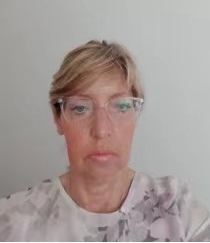Innovation And Reform Of The Model Of Judicial Procedures In The Digital Age: Use Of Video Links In Criminal Proceedings
Innovation And Reform Of The Model Of Judicial Procedures In The Digital Age: Use Of Video Links In Criminal Proceedings
Biljana Sinanovic
Deputy President of the Supreme Court of Cassation
I
I R. LUKIĆ - THE RELATIONSHIP BETWEEN SCIENCE AND TECHNOLOGY AS A METHODOLOGICAL BASIS
Technology offers us methods. We must not, being fascinated by the fashion of our time, believe in her God, as a substitute for content; or in discussing her, neglect the eternal context of human relations in which she, as a constantly changing tool, appears, always different from herself than yesterday. As Serbian prof. Lukić has said, in the classic book On the Methodology of Law: „Science means discovering what is new, while technique consists of implementing of what has previously been discovered.“ Being so, we should strive to use all that has been discovered – the inventions – for the purposes related to either humanism or the efficiency in criminal proceedings.
II
When we assess, on this basis, the purpose of technical means – and then specifically here the video link – let us start from the principle of immediacy, to convey this purpose. The principle of immediacy requires that there be no mediator between the court and the source of knowledge from which that court establishes a fact, as the doctrine of evidence teaches us. The use of video links introduces a modification of the so-called virtual presence in real time – of those persons being examined for evidentiary purposes. When we compare it, we see that this, without a doubt, protects better the principle of immediacy than e.g. international or domestic legal aid, where a witness or other person is being examined by another court upon request. This, however, raises questions related to other procedural steps, i.e whether such a virtual presence excludes the possibility of e.g. confrontation (where two people look into each others' eyes – not at the camera lens or the screen). This way, the court can hardly follow the psychological and emotional reactions of the parties confronted, which in the end disables or limits the purpose of this procedural institute. In the same way, through such test – both in today's discussion as well as in the future ones – it should be examined to what degree methodological use of technology is in line with all the other major principles of judicial procedure.On the other hand, it is already clear to us that, on the contrary, the principle of efficiency is the one that generally benefits from the application of the methods such as video-link. There is room, therefore, to expand the scope of application of this procedural institution – whether in order to reduce the expenses of court officials, or in some ancillar, side procedures, wherever some other procedural principles do not limit its scope.
A)
We are all aware that two almost completely separate purposes, stand for using this method.
First one, consisting in ensuring the presence of witnesses (or other persons) – who would otheriwise not be available in the criminal proceedings. This was, from a legislative point of view, the initial motive for the introduction of the video-link method, at least in our region.
B)
Secondly, another, substantial purpose strives more toward humanism in criminal proceedings and pertains children, victims of sexual violence, etc. being particularly sensitive categories of participants in the procedure. All they should be given the possibility of protection from secondary victimization, i.e. from additional traumatizationn that a criminal procedure could bring to these sensitive categories. Our law provides, therefore, the possibility of using a video-link for examination of a juvenile victim of a crime.
III
The role of innovative evidence techniques, including video-linking, is important, especially in combating organized crime. The so-called The United Nations Palermo Convention (ratified by our country) against transnational organized crime, provides the possibility of using technology, such as video links or other adequate means, in evidentiary proceedings, for the purpose of witness protection. Our law also provides these possibilites in the case of a protected witness.
Experience in the former Yugoslavia, especially in war crimes proceedings, has taught us that, generally, that had almost been impossible to ensure the presence of witnesses of other nationalities or so, until this seemingly peculiar alternative option of virtual presence has been introduced. There is no doubt that the importance of use of a video link, in such an example, has exceeded already by this its general importance as a method, historically enabling the realization of some, war crimes criminal proceedings which, otherwise, during post-conflict period, could not been held.
CONCLUSION
On the one hand, Pedro Domingos in his book "Master Algorithm"[ https://www.bookdepository.com/Master-Algorithm-Pedro-Domingos/9780465094271] proved that reasoning based on analogy, at least in artificial intelligence, is far more efficient than the syllogistic one. In another popular and influential book, „Online Courts and the Future of Justice“[ https://oxford.universitypressscholarship.com/view/10.1093/oso/9780198838364.001.0001/isbn-9780198838364], Richard Sussskind, the world's most cited author on the future of justice, shows how litigation is to be transformed by technology and suggests solutions to the global challenges regarding access to justice.
On the other hand, Zeitgeist, the defining spirit of our time is filled even saturated with technique. Let us master it to make it serve us. Let's, however, not believe in her fetish, because she, to us lawyers, is nothing but a tool; not neglecting it, on the other hand, as a possible path or maybe shortcut to content – the justification of which lies in its providing us with higher speed, ease or introducing a new possibility.
In the hands of a skilled legal craftsman, it is going to become useful, but it still cannot replace the craftsman himself, higher content of his / or her human being – his/or her creativity, spirit, value judgment, inherent only to human being, when acting in the role of a creative being, also within the field of law.
 |
Biljana Sinanovic
Deputy President of the Supreme Court of Cassation Republic of Serbia
Education experience
- UNIVERSITY OF BELGRADE Faculty of Law
Specialized Trainings and Exams
- Bar Exam,
- Several trainings related to Humanitarian Law and Organized Crime / Money Laundry /Human trafficking /
- Public procurement as a criminal offence
Career Record:
- 2010 – present The Supreme Court of Cassation of Serbia
Position - Elected Judge of the Supreme Court of Cassation
- 2005 – 2010 The Organized Crime and War Crimes Department of the Belgrade District Court
Position - Elected Judge and Deputy President of the Organized Crime Department of the Belgrade District Court Is Presiding Judge in the cases of the organized crime
- 1996 – 2003 The Belgrade District Court
Position - Elected Judge of the District Court Was Presiding Judge in the appellation cases, crime and war crime cases
- 1987 – 1996 The Fifth Municipal Court, Belgrade
Position - Elected Judge of the Municipal Court
- 1981 – 1987 The District Court in Belgrade
Position - Assistant Judge at the District Court







